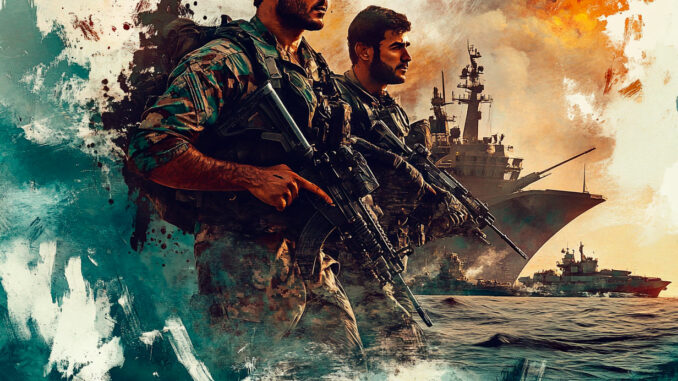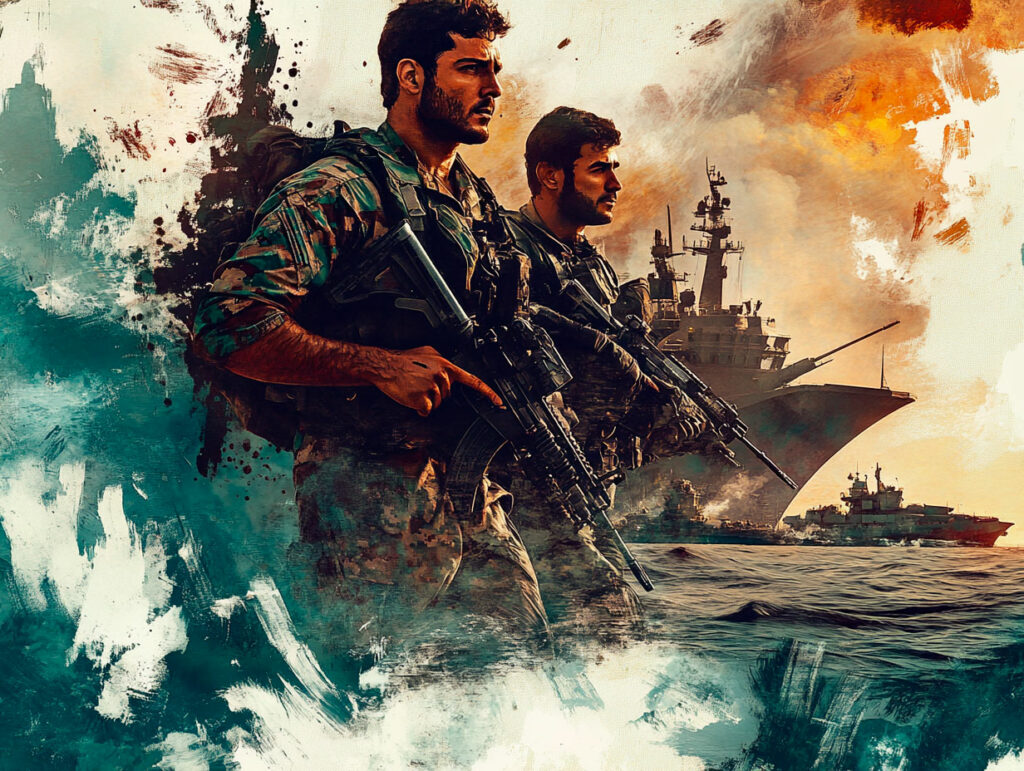
Analysis of the risks of regional imbalance in the Persian Gulf: military balances, zones of influence, terrorist threats.
The Persian Gulf is a strategic region where major economic and political interests are concentrated. Tensions between neighboring countries, notably Saudi Arabia, Iran, the United Arab Emirates and Iraq, are raising concerns about a possible regional imbalance. Military and strategic balances are influenced by historical rivalries, shifting alliances and arms races. Zones of influence are also redrawn by external interventions and local conflicts. The risks of terrorism and political instability add a further layer of complexity. This article examines these factors in detail to understand whether there is a real risk of imbalance in the Persian Gulf.
The strategic importance of the Persian Gulf
The Persian Gulf is a region of major geopolitical importance, mainly due to its energy resources. It is home to around 48% of the world’s proven oil reserves and 43% of its natural gas reserves. Countries such as Saudi Arabia, Iran, Iraq, Kuwait, Qatar and the United Arab Emirates are among the world’s leading hydrocarbon exporters. This concentration of resources makes the Persian Gulf a central axis for global energy supplies, directly influencing the economies of importing countries.
The Strait of Hormuz, a strategic maritime passage, sees the transit of some 21 million barrels of oil a day, or almost 21% of the world’s daily consumption. The security of this passage is therefore crucial to maintaining the stability of energy markets. Any disruption could have significant global economic consequences, such as higher oil prices and tensions on financial markets.
Strategic interests are not limited to energy resources. The region is also a focal point for international trade routes, linking Asia, Europe and Africa. Gulf countries have invested heavily in the development of their port and logistics infrastructures, reinforcing their role in world trade. For example, Dubai’s Jebel Ali port is one of the world’s largest, handling over 15 million TEU (twenty-foot equivalent unit) containers a year.
In addition, the Persian Gulf is at the heart of various political and military alliances. The United States maintains a significant military presence in the region, with some 35,000 troops deployed in bases in Kuwait, Bahrain and Qatar. This presence is designed to protect American interests and secure shipping lanes. The region is therefore a theater where national and international interests intersect, making its balance particularly sensitive.
Current military balances in the region
Military balances in the Persian Gulf are marked by an arms race and high military spending. Saudi Arabia is one of the world’s biggest arms importers, with military spending reaching over €61 billion in 2020. Although subject to international sanctions, Iran has developed asymmetrical military capabilities, notably in the fields of ballistic missiles and light naval forces.
Iran has an arsenal of ballistic missiles capable of striking targets within a radius of 2,000 kilometers, covering all the countries of the Gulf and beyond. Its naval forces employ asymmetric warfare tactics, deploying speedboats and maritime drones to threaten ships in the Strait of Hormuz. These capabilities pose a threat to freedom of navigation and global energy security.
For their part, Gulf Cooperation Council (GCC) states such as the United Arab Emirates and Qatar have invested heavily in modern military equipment. The UAE has acquired advanced fighter aircraft such as the American F-35 and the French Rafale. These acquisitions are aimed at maintaining a balance against Iranian capabilities and ensuring the defense of their territories.
The United States plays a key role as a strategic partner for several Gulf countries. The US Fifth Fleet, based in Bahrain, regularly patrols the region to ensure maritime security. Joint military exercises between the United States and Gulf countries strengthen the latter’s defensive capabilities. However, the US presence is also perceived as a threat by Iran, fuelling regional tensions.
Zones of influence and rivalries between regional powers
Zones of influence in the Persian Gulf are the result of historical rivalries and competition for regional leadership. Saudi Arabia and Iran are the two main powers seeking to extend their political, economic and religious influence. This rivalry manifests itself in various Middle Eastern countries, where each supports groups or governments aligned with its interests.
In Yemen, Saudi Arabia is leading a military coalition against the Houthis, an Iranian-backed group. The conflict, which began in 2015, has caused a major humanitarian crisis, with over 233,000 deaths according to the United Nations, much of it due to indirect causes such as famine and disease. Iran’s support for the Houthis is seen by Saudi Arabia as an attempt by Iran to extend its influence to its southern border.
In Iraq, Iran exerts significant influence through Shiite militias and political links. The Popular Mobilization Forces, an umbrella group of Shiite militias, number around 140,000 fighters and have played a key role in the fight against the Islamic State. However, their presence raises concerns about Iraqi sovereignty and Iran’s role in the country.
The United Arab Emirates and Qatar are also engaged in a competition to increase their regional and international influence. Qatar was subjected to a blockade by its GCC neighbors between 2017 and 2021, due to political differences and its support for certain groups. This crisis has highlighted fractures within the Gulf countries and affected alliance dynamics in the region.

Risks of terrorism and political instability
The Persian Gulf is faced with terrorist risks that threaten regional security. Groups such as Al-Qaeda in the Arabian Peninsula (AQPA) and the Islamic State have carried out attacks in the region, targeting both security forces and civilians. For example, in 2015, an attack claimed by the Islamic State struck a Shiite mosque in Kuwait, killing 27 people and injuring more than 200.
Political instability is also a risk factor. Protest movements, such as the Arab Spring in 2011, have shaken some of the region’s regimes. Although the Gulf monarchies have managed to maintain their stability, they have had to face up to social and economic demands. Bahrain saw massive protests, suppressed with the help of Saudi Arabia and the United Arab Emirates.
Sectarian tensions between Sunnis and Shiites are also fuelling instability. Iran, with its Shiite majority, is often accused by Sunni Gulf states of exacerbating these tensions to extend its influence. These internal divisions can be exploited by terrorist groups to recruit and carry out destabilizing operations.
Finally, cyberthreats represent a new area of risk. Computer attacks have targeted critical infrastructures, as in 2012 when the Shamoon virus struck the Saudi oil company Aramco, affecting 30,000 computers. The ability of states in the region to protect their digital infrastructures has become a major issue for national security.
Implications for regional and global security
The risks of regional imbalance in the Persian Gulf have implications that go beyond the region’s borders. Escalating tensions could disrupt global energy supplies, affecting Gulf oil-dependent economies. A 10% rise in oil prices could reduce global economic growth by 0.2%, according to the International Monetary Fund.
Regional conflicts can also lead to humanitarian crises, increasing refugee flows and pressure on international aid systems. The conflict in Yemen has already displaced over 4 million people, creating urgent humanitarian needs. Further instability could exacerbate these challenges, requiring a coordinated response from the international community.
In terms of international security, the proliferation of sophisticated weapons and advanced military technologies in the region increases the risk of military escalation. Even minor incidents could degenerate into wider conflicts. For example, the attack on Saudi oil facilities in September 2019, attributed to Iran, temporarily cut global oil production by 5%, underlining the vulnerability of critical infrastructure.
The world’s major powers have strategic interests in the region, further complicating the situation. The USA, Russia and China are all involved, either through military alliances or economic partnerships. This multipolarity can lead to additional rivalries, making conflict resolution more complex.
Towards a regional imbalance?
The Persian Gulf is at a critical crossroads where military tensions, political rivalries and terrorist risks converge. Current dynamics suggest a real risk of regional imbalance. Arms races, shifting alliances and proxy conflicts increase the likelihood of escalation.
To mitigate these risks, diplomatic efforts and regional cooperation are essential. Establishing mechanisms for dialogue and trust could help stabilize the region. The international community also has a role to play in promoting peaceful solutions and avoiding interventions that could aggravate tensions.
War Wings Daily is an independant magazine.